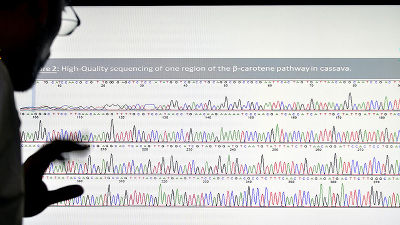It turns out that the characteristic of autism that gaze does not match can be seen from the time of baby

ByDarren Johnson
"I do not make eye contact with others"autismIt turned out that the characteristic which is often seen in 2 months has appeared from 2 months after birth. In past autistic studies,Social skill trainingWe found that early behavioral therapy including autism therapy improves the social nature of children with autism, but the results of this study point out the effectiveness of earlier treatment.
Attention to eyes is present but in decline in 2-6 months - old infants later diagnosed with autism: Nature: Nature Publishing Group
http://www.nature.com/nature/journal/vaop/ncurrent/full/nature12715.html
Baby's Gaze May Signal Autism, a Study Finds - NYTimes.com
http://well.blogs.nytimes.com/2013/11/06/a-babys-gaze-may-signal-autism-study-finds/
Dr. Warren Jones of Emory University and Dr. Ami Klin, Director of Marcus Autistic Center, suggest that children with autism gradually draw attention to the human eye between 2 months and 6 months of age Disappeared and published a research paper summarizing the result that the signs of autism appear at a relatively early stage in the Nature magazine.
Dr. Jones and Dr. Klin's research team investigated 110 babies from 2 months old to 2 years of age in the long term, using gaze tracking technology to monitor human gaze. The experiment was divided into a group of babies with brothers with autism and a group of babies without autistic relatives. This is based on the fact that babies with autistic brother are statistically 20 times more likely to develop autism.
In the experiment, I showed a video of a friendly woman who acted as a nursery teacher to a baby and examined what the baby was looking at for other things such as women's eyes, mouth, body or toys over 10 degrees. After that, when the baby became 3 years old, it was diagnosed whether it was autistic, and finally, from the gaze tracking data of 36 boys including eleven who were diagnosed as having autism, "gaze "The characteristic of autism that you do not point people's eyes, it will occur within 2 months to 6 months after birth". Moreover, since only two girls did not develop autism, girls were excluded as research data.

ByChristina rutz
Furthermore, from the experimental results, it is clear that the characteristic of avoiding seeing others's eyes is not seen immediately after birth, and that trend will gradually increase from early babies in about 2 months of age became. Dr. Geraldine Dawson, a director of the Center for Autistic Diagnosis and Duke University, said that although the number of samples in this study is very small, it is evaluated as highly reliable because it is being conducted very carefully and repeatedly It is a very important result as giving clues to the development of the brain, since the baby shows a normal reaction just after birth. "
In this study, it became clear that a baby who develops autism later turns his / her eyes to the mouth of a woman in the video and keeps her attention to the body of the woman. Also, it turned out that by the age of one, I was more interested in things ordinary children no longer interested in. Dr. Dawson says, "Babies learn facial expressions, languages and gestures by looking at people.When autistic babies are interested in things and do not see people, learning opportunities I have missed out. "

ByRam reddy
Following the results of this research, autistic experts say that by the time a child reaches age 1, he may be able to see the potential features of autism. The American Academy of Pediatrics recommends that a diagnosis of autism should be taken from 18 months to 24 months after birth, but many children with autism have been diagnosed between 3 and 5 years of age There is a need for diagnosis at an earlier stage in the future.
Dr. Jones and other autistic experts believe that it is possible that suppression of symptoms can be suppressed by conducting autism treatment earlier from this study, It is expected to be useful for treating diseases. In addition, Dr. Jones calls attention to keep track of the baby's eye gaze as it requires specialized skills and expertise, so that the baby does not worry too much.
Related Posts:







